
by danielcmckenzie | Feb 2, 2020 | Uncategorized
San Francisco officials have hyped the City’s water quality for more than a century, using it to justify damming an iconic landscape in Yosemite National Park. That hype may be coming back to bite them as the San Francisco Public Utilities Commission seeks to diversify its water system.
To be fair, the water quality is good. But it will continue to be good when Hetch Hetchy Valley is returned to its natural splendor.
While many of us think of Hetch Hetchy as a valley waiting to be reborn, the term “Hetch Hetchy” is often used as a moniker for San Francisco’s water system, or for the water itself. Officials have often bragged that the water is so pure its doesn’t require filtration (though it is treated with a combination of chlorine, ammonia and ultraviolet light to ensure pathogens are eliminated).
As a result, a handful of customers will always complain whenever there is a change in San Francisco’s Regional Water System. In 2017, when the PUC announced its plan to add groundwater to supplies on the western side of San Francisco (see below), the SF Chronicle published a story about the concerns of bagel makers and coffee roasters (brewers provided mixed reactions). Christopher Hendon, the MIT chemist interviewed for the story noted that several food-centric cities, especially when it’s soft, such as Melbourne, Australia, and Kyoto, Japan, as well as New York, identify strongly with their water and dryly opined that “San Francisco’s water is not particularly special.”
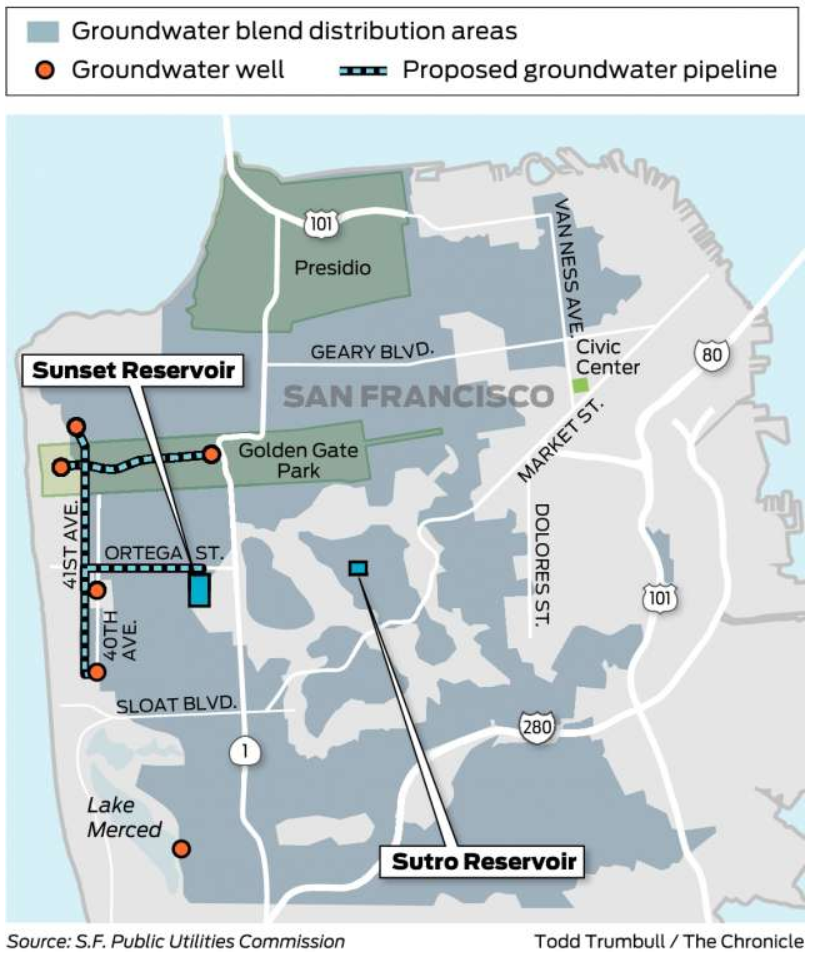
More recently, the PUC, following the lead of other California water agencies, is considering recycling wastewater for potable use. Staff is excited about the idea – in part because recycled water is a “drought-proof” supply. But they’ve found they need to reeducate some customers who want no changes to their pure “Hetch Hetchy” water.
It’s time for a bit of education and to change the narrative. San Francisco’s Regional Water System is not and has never been entirely derived from the Tuolumne River (where Hetch Hetchy is). The system receives about 15% of its supply from watersheds in Alameda and San Mateo Counties. And about 30% of its overall supply is filtered at the PUC’s Sunol and Harry Tracy Water Treatment Plants
What’s more, at the time of the 2017 Chronicle article and again for six weeks in 2019, no Tuolumne River water was flowing to the Bay Area. The system’s Mountain Tunnel was shut down for repairs and the PUC was supplying customers entirely from Bay Area reservoirs. Does anyone even notice a difference in the water when San Francisco switches its primary source?
Restore Hetch Hetchy is committed to protecting water quality as well as to replacing every last drop of San Francisco’s supply as part of a restoration plan. We are pleased to see that the San Francisco Public Utilities Commission is also now involved in educating its customers that its water system is not all about “Hetch Hetchy”.
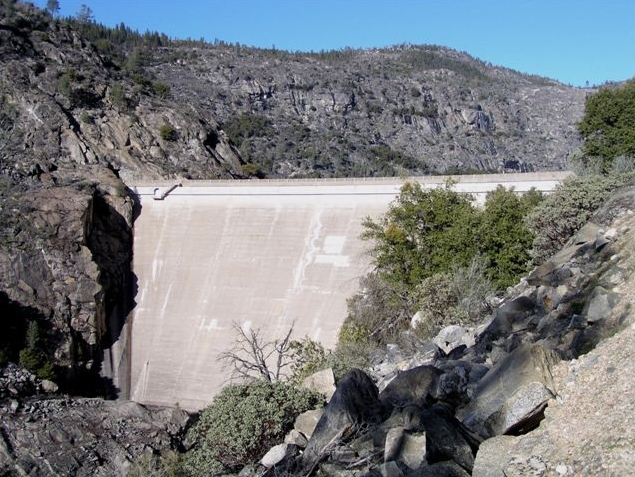
by danielcmckenzie | Dec 20, 2019 | Uncategorized
The House of Representatives engaged in last-minute, closed-door shenanigans as it passed a $1.37 trillion spending plan for 2020. The bill includes a ban on boating on Hetch Hetchy Reservoir – an opportunity we have promoted that would allow visitors to explore the spectacular canyon (as we continue to push for restoration).
At least when Congress passed the Raker Act in 1913, there was public debate. Not this time.
The bill claims to be about protecting water quality, but fails to note that San Francisco operates its own gas-powered boat on the reservoir. Our proposal was for non-polluting craft, such as canoes and kayaks, and a small electric-powered ferry.
The San Francisco Chronicle included the story on its front page today, and posted it online as well.
Our statement is below:
Statement of Restore Hetch Hetchy Regarding
Congress’ Exclusion of Public in Yosemite National Park
December 19, 2019
Background
The House of Representatives, at the behest of the City of San Francisco, has taken action behind closed doors to exclude park visitors from boating on Hetch Hetchy Reservoir in Yosemite National Park.
The provision to ban boating on the reservoir was included in a last-minute attachment to the House’s 2313-page appropriations bill. Passage of the bill is necessary to avoid a government shutdown and is expected to pass the Senate. The specific Hetch Hetchy language states:
Hetch Hetchy Reservoir. The Hetch Hetchy Reservoir, which is located in Yosemite National Park, is the drinking water source for 2.7 million Americans. Since the reservoir’s creation in 1923, boating has been prohibited to prevent the introduction of contaminants, and to date the quality of the water from Hetch Hetchy Reservoir is such that it does not require filtration. The Service is directed to maintain this longstanding prohibition.
Because it is attached to a one-year spending bill, the boating ban will expire at the end of 2020.
Statement of Spreck Rosekrans, Executive Director
San Francisco’s water quality claim is a ruse. Other water agencies safely allow boating on reservoirs throughout California and other states. Further, San Francisco operates its own gas-powered boat on the reservoir. Our proposal involves only quiet, non-polluting craft, including kayaks and canoes, which would allow visitors to explore currently inaccessible areas of Yosemite National Park.
Public access, including boating, was widely promised when Congress debated and ultimately passed the Raker Act allowing Hetch Hetchy Valley to be dammed and flooded – the only time in American history that such destruction has been allowed in any of our national parks. Members of Congress and specifically Representative Raker, the bill’s author, were assured that boating would be allowed. At San Francisco’s behest, Congress has unwittingly undermined the Raker Act, carefully negotiated a century ago, and sacrificed public access in Yosemite National Park.
The real reason San Francisco does not want environmentally friendly boating on Hetch Hetchy Reservoir is that they want to limit public access. If park visitors are allowed to explore Hetch Hetchy’s spectacular canyon, many will support emptying the reservoir and restoring the valley. San Francisco wants Hetch Hetchy to itself.
Restore Hetch Hetchy’s mission is to return the Hetch Hetchy Valley in Yosemite National Park to its natural splendor while continuing to meet the water and power needs of all communities that depend on the Tuolumne River.

by danielcmckenzie | Dec 13, 2019 | Uncategorized
It’s impossible to overstate the importance of getting support from water industry experts, especially leaders like Clark and Boronkay. They understand better than most that restoration can be accomplished without jeopardizing reliable water supplies for San Francisco or any other community. Their support works well to refute opponents who, too easily and too often, confuse their “water source” with a single reservoir.
As General Manager of Kern County Water Agency, Tom Clark was a fierce and often irreverent advocate for exporting water from the Delta into the Delta-Mendota Canal and the California Aqueduct His views were not popular among the environmental and fishing groups fighting to limit the amount of water extracted from the Delta.
Like so many of us, however, Tom loved Yosemite. So shortly after he retired, he joined the Advisory Board of Restore Hetch Hetchy. Tom said humbly and simply that he hoped he might be able to help negotiate a deal. It’s too bad he never had the chance, because he was one heckuva negotiator.
Sadly Tom passed away in 2011 after a battle with cancer. His memorial service, held at Buck Owens’ Crystal Palace in Bakersfield, was filled with water industry colleagues and as well as his obviously very close family. It seemed like everybody in the room told their own Tom Clark story – each one funnier or more outrageous than the last.
Several stories involved negotiating the controversial Monterey Agreement in which Tom acquired local control of the Kern Water Bank from the State. In doing so, Clark became a local hero. Many outside of Kern County, however, objected to both the process and the outcome of the closed door meetings.
Clark’s role in negotiating the Monterey Accord is recounted in “The Dreamt Land: Chasing water and dust across the West (Mark Arax, 2019). The book includes an amusing vignette that illustrates Clark all too well – that during the meetings he passed out pacifiers to his water agency adversaries when they “whined”!
The Monterey Accord and its cession of the Kern Water Bank from the State to local interests is an important story. Here’s a short summary:
- In 1991, the fifth year of a drought, the State Water Project had very little water to deliver. The SWP, operating under a system of “urban preference”, allocated a small amount of water to its urban customers and none to its farmers.
- The Kern County Water Agency, by far the SWP’s largest agricultural customer was apoplectic. On top of getting no water, they still had to pay a hefty fixed cost for the original construction of the project (essentially a mortgage payment for their share of the Oroville Dam, the Harvey O. Banks Pumping Plant and the California Aqueduct). Kern threatened to sue.
- Threatened by the lawsuit, in 1995 the State Water Project Contractors and the California Department of Water Resources held a set of closed door meetings in Monterey. At these meetings, Clark negotiated for the State to cede the Kern Water Bank, a massive aquifer conveniently located adjacent to the California Aqueduct, to private interests in Kern County.
- As part of his negotiating tactics or maybe just for fun, Clark handed out pacifiers to his counterparts when he perceived they were whining.
- The Kern Water Bank was handed over to its principal investors. Most prominent among them are Stuart and Lynda Resnick, California’s largest “farmers” and owners of the Wonderful Company. Wonderful’s website boasts that it is “making the world a better place, one brand at a time”. Wonderful also has many detractors. Mother Jones, for example, wrote a scathing article criticizing Wonderful for using more water than all homes in Los Angeles combined.
- In some ways, the Kern Water Bank is the poster child of how a water bank should work. The bank is recharged in wet years and can be drawn down in dry ones, providing additional reliability. The bank allows Wonderful and other farming companies to invest in valuable orchard crops with limited risk. Many, if not most, however, argue that these benefits should be in public hands and more evenly distributed.
Restore Hetch Hetchy will continue to work with water system experts to show that Hetch Hetchy Valley can be restored without sacrificing water supply reliability. Not a drop need be lost.
And if we are able to find ourselves in a strong negotiating position, we won’t be handing out binkies. It’s been done.
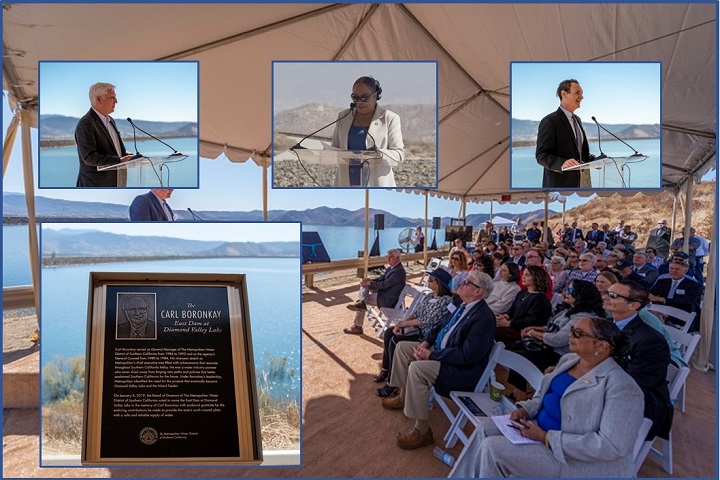
by danielcmckenzie | Nov 13, 2019 | Uncategorized
“Water Buffalo” Carl Boronkay supported restoration of Hetch Hetchy. Carl Boronkay was no typical tree-hugger.
Carl was a “water buffalo” – a term (sometimes endearing, sometimes not) given to the most powerful water industry people in California and the semi-arid west. From 1984 to 1993, Boronkay served as General Manager of the Metropolitan Water District of Southern California, the nation’s largest water wholesaler serving 19 million people.
Yet Carl Boronkay supported restoration of Hetch Hetchy Valley in Yosemite National Park.
In 1987, while serving as General Manager, Carl wrote an editorial opinion for the Los Angeles Times, advocating a study of restoring Hetch Hetchy Valley. Titled, “LIKE MONO LAKE, LIKE HETCH HETCHY”, Boronkay explained that Hetch Hetchy is a “world treasure” and that “we, as a society, have the right and the duty to review decisions allocating the use of water held by the state in trust for the public.” He joined Restore Hetch Hetchy’s Advisory Committee in 2005, then helped with our ballot measure in San Francisco in 2012 and potential legislative solutions after the ballot measure failed.
Carl passed away in 2017, but he left an incomparable legacy at Metropolitan. When he took over, the agency’s sole role was managing imports from the Colorado River and Bay-Delta for cities in California’s southland. The six-year drought from 1987-92, however, was a wake-up call for Metropolitan, as it was for other water agencies. In addition, public support for providing water to waterfowl at Mono lake and to fisheries in the Bay-Delta was growing, threatening the reliability of water supplies.
Carl led Metropolitan’s efforts to diversify its system. Metropolitan changed. It negotiated with farmers, encouraging them to improve irrigation efficiency so a portion of their supply could be sold to cities. MWD also invested in groundwater recharge, locally, in the Mojave Desert and in Kern County. And, under Carl’s leadership, Metropolitan built Diamond Valley Reservoir in Riverside County. The reservoir holds 800,000 acre-feet, more than twice the volume of Hetch Hetchy Reservoir.
In a ceremony at Diamond Valley on October 16, Metropolitan honored Carl by naming the dam at its east end in his honor. The honor is well-deserved as Carl creatively and aggressively made changes to Metropolitan’s water system so it could better withstand droughts and meet environmental commitments.
The water industry needs more leaders like Carl Boronkay. Is anyone prepared to step forward? Anyone in San Francisco?
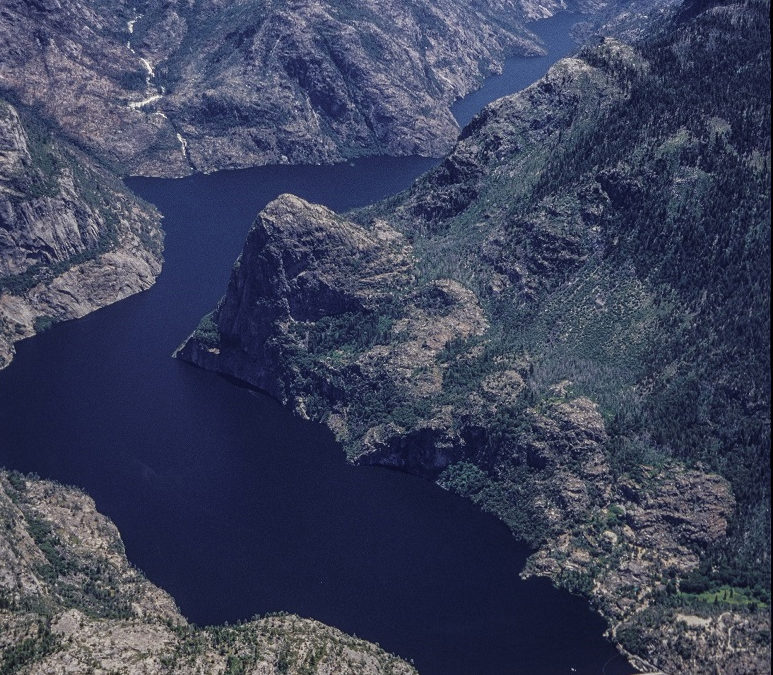
by danielcmckenzie | Sep 29, 2019 | Uncategorized
Today’s San Francisco Chronicle includes a supportive full-page article on our request, submitted jointly with CalTrout, to allow environmentally friendly boating on Hetch Hetchy Reservoir. The article is authored Tom Stienstra, the Chronicle’s award-winning outdoors writer, and is posted online.
As we explained three months ago, there are two principal reasons for supporting boat on the reservoir:
- Boating will allow visitors to see the entire Hetch Hetchy canyon, as well as disembark to fish, climb, hike or picnic in locations that are presently inaccessible.
- Second, boating will be a great educational tool in support of restoration. Visitors to Hetch Hetchy will have the opportunity to learn about the greatest destruction ever allowed in any of our national parks and the opportunity to bring the valley beneath back to life.
There was much response after we and CalTrout sent our initial proposal to Secretary Bernhardt and Mayor Breed. Most restoration supporters were enthusiastic. “Why didn’t I think of this earlier? Why didn’t you think of this? Why didn’t any of us?”, wrote one former board member.
A few supporters have, however, expressed the concern that allowing boating will create a constituency of people who like the reservoir, and will thus make restoration more difficult. We ask these people to bear mind that nobody will be water skiing or even bringing in their own boats. They will be taking a slow but wonderful ride in a concessionaire-run ferry or possibly renting a canoe or kayak. We are confident support for restoration will be increased – significantly.
There has been no official response from Interior. Stienstra, however, is among those who are optimistic. He wrote: “In my conversations with Zinke and Bernhardt, each were friendly, upbeat and emphasized that improving public access, reducing litter and enhancing the quality of experience at national parks in the future were priorities at the Department of the Interior.”
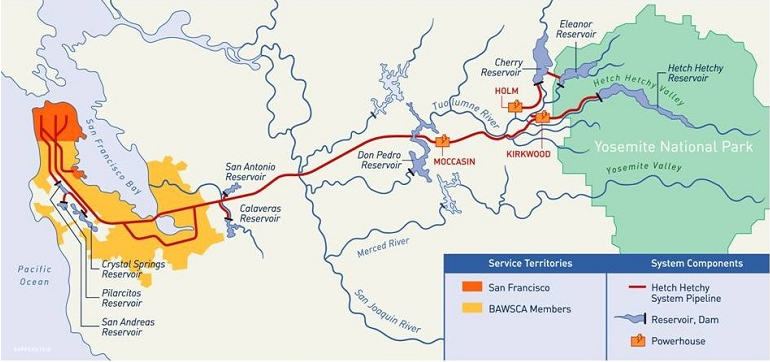
by danielcmckenzie | Aug 12, 2019 | Uncategorized
After Thoughtful and Balanced News Story, San Francisco Chronicle Editors Retreat to Familiar Ground
Editorial: “The latest plan to drain the Hetch Hetchy water system doesn’t add up.”
The editorial department at the San Francisco Chronicle weighed in after last week’s excellent and somewhat sympathetic article on the potential value of restoring Yosemite National Park’s Hetch Hetchy Valley. Titled “The latest plan to drain the Hetch Hetchy water system doesn’t add up“, today’s editorial is consistent with previous positions the paper has taken.
Obviously, Restore Hetch Hetchy disagrees
For starters, let’s note that no one has proposed draining the “system”. The San Francisco Public Utilities Commission stores water in nine reservoirs. We have suggested only one be emptied. Why does the editorial choose to confuse Hetch Hetchy Reservoir with the entire “system”?
And Restore Hetch Hetchy has always insisted that improvements be made so that not one drop of water supply is lost.
Let’s also note that the report, “Valuing Hetch Hetchy Valley: Economic Benefits of Restoration in Yosemite National Park” is not a “plan” and was never purported to be. The report itself makes clear that it does not address the system improvements that would be necessary and, even on the value side, recommends “a more detailed and extensive national survey, independently administered with collaborative and broad participation from government and stakeholders”.
Rather than examine the report on its merits …
…the Chronicle editors seem inclined to nip any discussion of restoration in the bud, as they have done in the past.
The editorial does make a few concessions. It queries “Who wouldn’t want another Yosemite Valley a few miles from the ultra-crowded one?”, and further acknowledges “It’s certainly true that such a project would be difficult, if not impossible, to enact today.”
Egregiously, the editorial characterizes Restore Hetch Hetchy as “starry-eyed”, and reminded readers that Mayor Ed Lee called restoration “insane”. We are provocative and ambitious, but we are absolutely practical. We understand every drop of water and every kilowatt of power needs replacement. The staff at the SFPUC understand this and generally respect us – even if most do not support our goal (some do, albeit quietly). A handful of politicians and a few in the media, however, prefer to brand us with hyperbole.
The editorial also opined that the report’s comparison of Hetch Hetchy to various dam projects was unwarranted. It claimed the dams on the Klamath that are scheduled for removal are “outmoded”, even though they produce twice as much hydropower as will be lost when Hetch Hetchy is restored. The editorial did not address steps taken by Los Angeles to restore Mono Lake – something once fiercely opposed by the City of Angels and now held up as a point of civic pride.
We think someday San Francisco will come around on Hetch Hetchy as Los Angeles has on Mono Lake. We are currently working, in-house and with expert assistance, on updated analysis of the water system improvements that could make Hetch Hetchy’s restoration possible. When that is complete, we will give the Chronicle editorial board another chance to consider our campaign.
Meanwhile, note the Chronicle has a strong and consistent record of supporting aquatic restoration projects in California – at least those that do not affect San Francisco. Here are a few examples:
Mono Lake
The Chronicle called Mono Lake “a splendid ecosystem”, concluding that “Every measure possible should be taken to restore this California treasure.”, even though restoration would limit the amount of water diverted to the “ever thirsty city of Angels” and noting that restoration can be accomplished by “refusing to bow to the greedy demands of Los Angelenos for water”. (September 22, 1994)
Bay-Delta
The Chronicle has consistently supported restoration of fisheries and wetlands in the Central Valley and Bay Delta, including the Central Valley Project Improvement Act (1992). Citing “salmon, striped bass and other fish had been devastated by the series of dams, canals and reservoirs built by the federal government in the 1930s and 1940s”, the Chronicle specifically supported reallocating 800,000 acre-feet of water (more than twice the volume of Hetch Hetchy Reservoir) to support fisheries rather than send it to Central Valley farmers. (January 3, 1996 and November 20, 1997)
Trinity River
The Chronicle has also supported restoration of the Trinity River in northern California, describing it as a “shadow of its free-flowing self” where “Salmon and steelhead stocks have plummeted to a tenth of pre-dam size, harming both the fishing industry and two Indian tribes”. The Chronicle called the diversions from the river to generate hydropower and provide water for agriculture “no small water grab”. (November 27, 2000)
Klamath River
The Chronicle has supported the removal of four hydropower dams on the Klamath River in an effort to restore salmon populations. The editorial’s title urges that we “Take down the dams”, noting that “an amazing change is suddenly attainable” and that “A river’s past could be restored.” (February 6, 2007)
But when it comes to the Tuolumne River and the Hetch Hetchy Reservoir (the only such facility ever built in a national park), the Chronicle has a decidedly negative view. One has to ask why.
Is restoring Yosemite National Park not as important or valuable as efforts to restore bird habitat at Mono Lake, or salmon and smelt populations in the Bay-Delta and on north coast rivers? If that is the Chronicle’s view, it should so opine.
Is Hetch Hetchy Reservoir such an indispensable part of supplying water for San Francisco and other Bay Area cities? Seems unlikely. By any stretch of imagination, the required water supply replacement would be far less than that required as a result of water export reductions in the Bay-Delta or on the Trinity River.
Is it the hydropower? Hydropower on the Tuolumne River, to be replaced with renewable resources, would be about what was lost when the Trinity River Plan went into effect and a fraction of what will be lost when the Klamath Dams are removed.
So are the Chronicle’s views of the potential to restore Hetch Hetchy based on the merits? Or is there a double standard at play?







